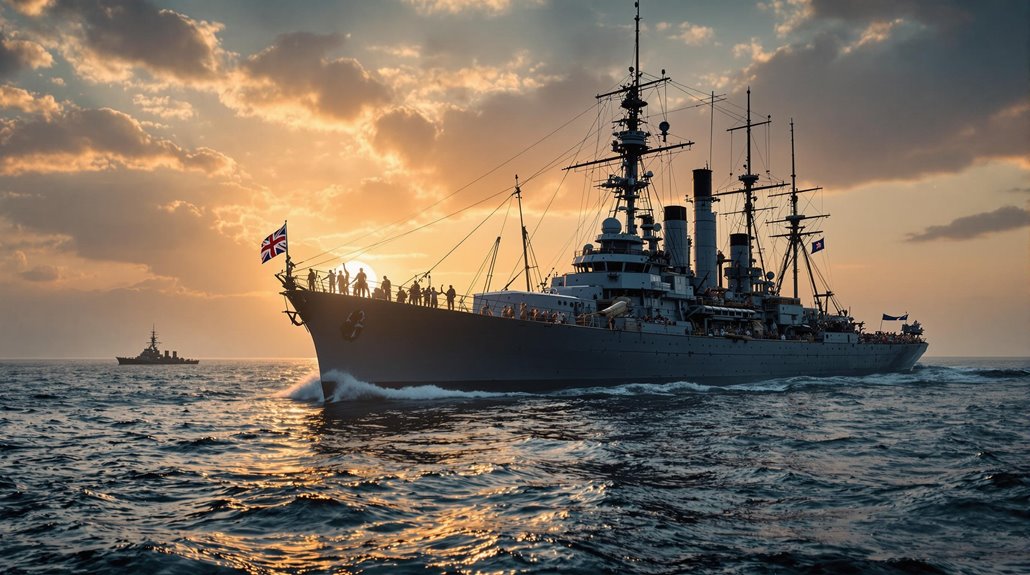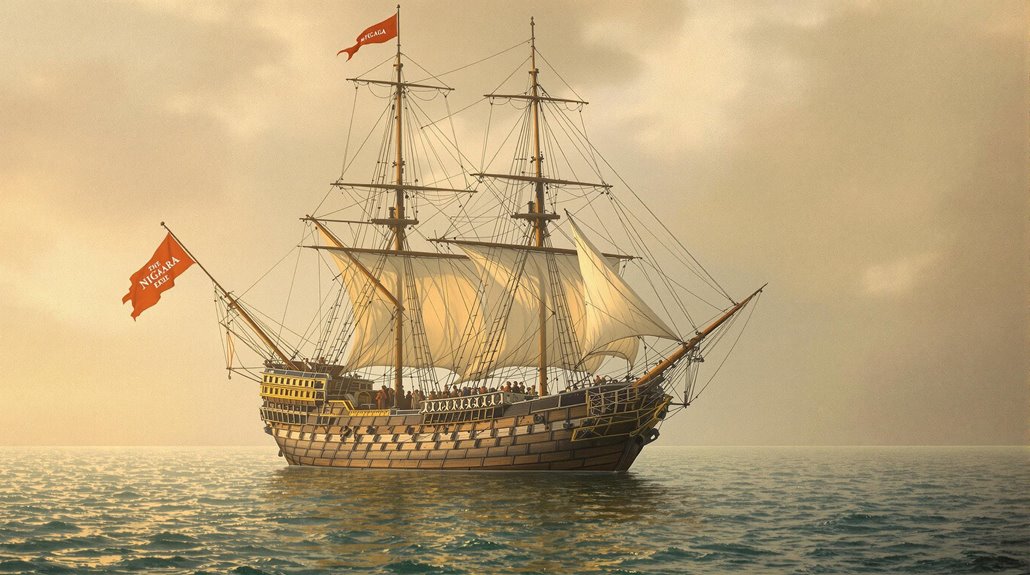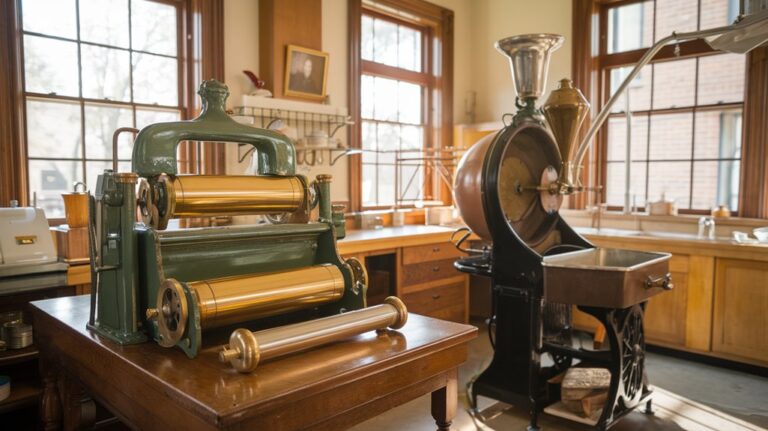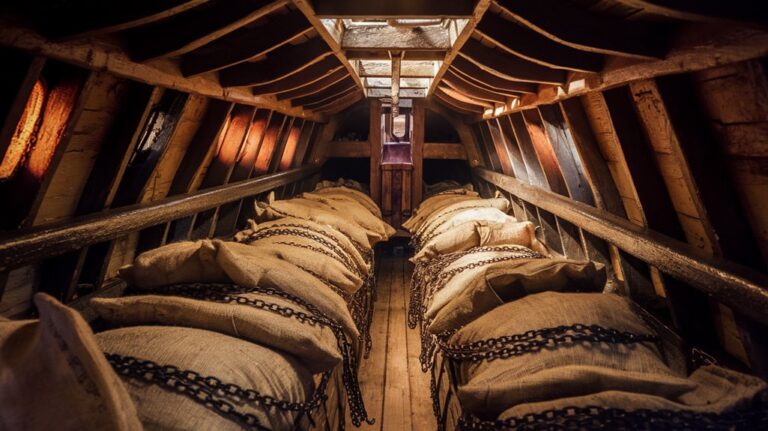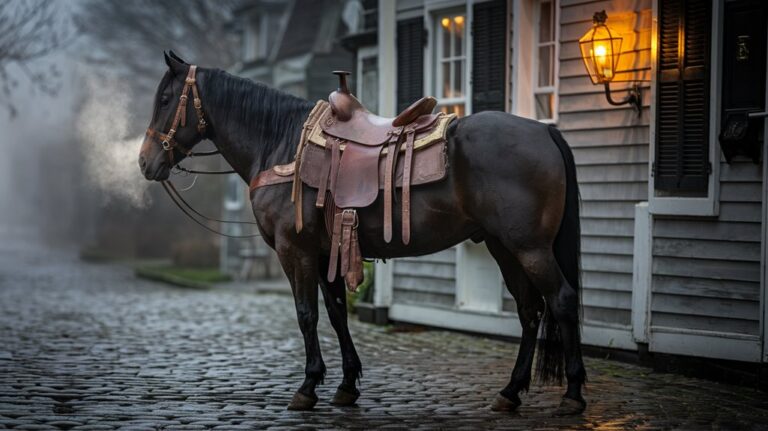Britain’s Tiny “Naval War” for One Lake
Much like the legendary Helen of Troy whose face launched a thousand ships, Lake Erie sparked its own epic naval conflict in 1812. You'll find it hard to believe that a single freshwater lake could become the stage for a pivotal turning point in American history. But that's exactly what happened when Britain and America locked horns over this essential waterway. What's even more surprising is how a hastily assembled fleet of ships, built from wilderness timber, would change the course of a nation.
The Strategic Significance of Lake Erie
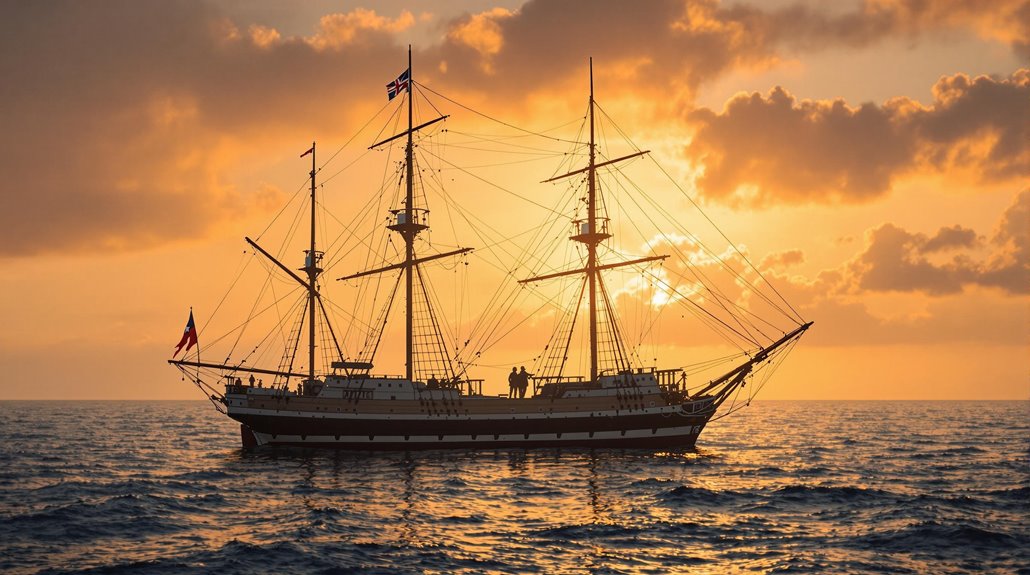
A watery lifeline between the Upper Great Lakes and the Atlantic Ocean, Lake Erie proved strategically important during Britain's naval campaign.
You'll find its position uniquely significant, as it borders both U.S. territory and British-controlled Canada, making it a key battleground for both nations.
The lake's importance extended far beyond lake commerce – it served as an essential artery for military logistics, allowing troops and supplies to move efficiently between the Midwest and East Coast. With a maximum depth of only 210 feet deep, the lake's shallow waters made naval operations particularly challenging.
Control of Lake Erie was particularly crucial after the U.S. suffered early setbacks when they lost Detroit territory to British forces.
If you controlled Lake Erie, you effectively controlled the surrounding territory and could project power deep into the continent.
This made the lake a prime military objective, as whoever dominated its waters could defend their borders, launch offensive operations, and maintain critical supply lines for their forces.
Building Warships From Wilderness Trees
While Lake Erie's waters proved essential to naval control, the ships that sailed them began as towering oaks in North America's dense forests.
You'd find timber sourcing for these vessels was an enormous undertaking – each warship required thousands of mature oak trees, some over 400 years old. Ship construction demanded specific types of oak, prized for their strength and durability in naval warfare. A typical 100-gun vessel needed 40 hectares of forest to complete. This durability was proven by vessels like the USS Constitution, whose thick oak hull earned it the nickname "Old Ironsides" when British cannonballs bounced off.
Britain's desperate need for naval timber had already strained forests across the Atlantic. They'd established strict protections like the Mast Preservation Clause in colonial America to secure suitable trees.
In the wilderness around Lake Erie, both British and American shipwrights faced the formidable task of identifying, cutting, and processing massive oaks – transforming these ancient giants into the warships that would decide the lake's fate.
Perry's Daring Mid-Battle Ship Transfer
In the most daring naval maneuver of the Battle of Lake Erie, Commander Oliver Hazard Perry faced a critical decision as his flagship Lawrence lay crippled and most of his crew lay dead or wounded.
With his battle flag "Don't Give Up the Ship" in hand, Perry's bravery shone as he made a perilous half-mile journey in a small boat under heavy British fire, taking just four unwounded crew members with him. His squadron had been heavily impacted, as lake fever had incapacitated 116 crew members before the battle even began.
The leadership change proved decisive.
Upon reaching the fresh Niagara, Perry immediately took command from Jesse Elliott and raised his battle flag.
Within 15 minutes, he'd broken through the British line, catching their ships Detroit and Queen Charlotte tangled together. The collision left both ships disabled, making them vulnerable targets for American fire.
His bold transfer, initially mistaken by the British as a retreat, instead led to their complete surrender and an American victory.
The Price of Victory: Casualties and Captures
The Battle of Lake Erie exacted a heavy toll on both sides, with British forces suffering particularly devastating losses. A casualty analysis reveals that while Americans lost 27 killed and 96 wounded, the British suffered 41 killed, 94 wounded, and a staggering 306 captured or missing.
You'll observe the stark difference in casualty rates – 20% for Americans versus 50% for British forces. The Royal Newfoundland Regiment endured especially high losses, with over 50% of their men killed or wounded.
The heaviest American losses occurred aboard USS Lawrence, where 83 crew members were killed or wounded, including 8 officers. British Commander Barclay's injuries were particularly severe, losing a leg and the use of his remaining arm. Perry's daring transfer to the USS Niagara proved to be the turning point that led to British defeat.
The prisoner treatment following the battle was remarkably humane – Perry showed respect to captured British sailors, who were subsequently sent to Chillicothe, Ohio, while three damaged ships were converted into hospital vessels.
How One Lake Battle Changed American History
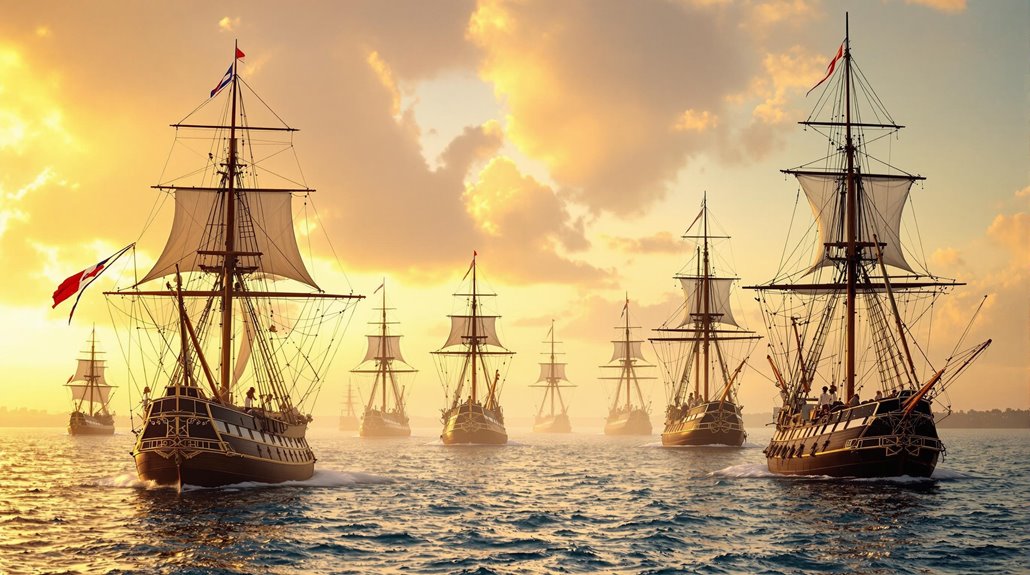
Despite occurring on just one Great Lake, the Battle of Lake Erie proved to be a pivotal moment that reshaped American history.
You'll find that this three-hour clash showcased American naval innovation and resolve when Commodore Perry daringly transferred ships mid-battle to snatch victory from near-defeat.
The battle's impact reached far beyond the water.
By securing Lake Erie, you'd see the Americans regain control of Michigan Territory while effectively ending the threat of Native American raids in Ohio and Indiana.
This victory destroyed Tecumseh's confederacy and secured the entire northwestern frontier.
What's more, as the first major U.S. naval triumph in the War of 1812, it restored American confidence after numerous setbacks and elevated the young nation's naval reputation on the global stage.
The battle claimed the lives of 41 British soldiers during the fierce naval engagement.

